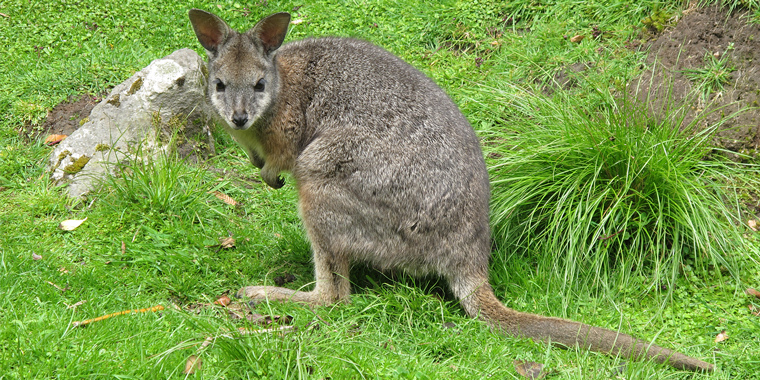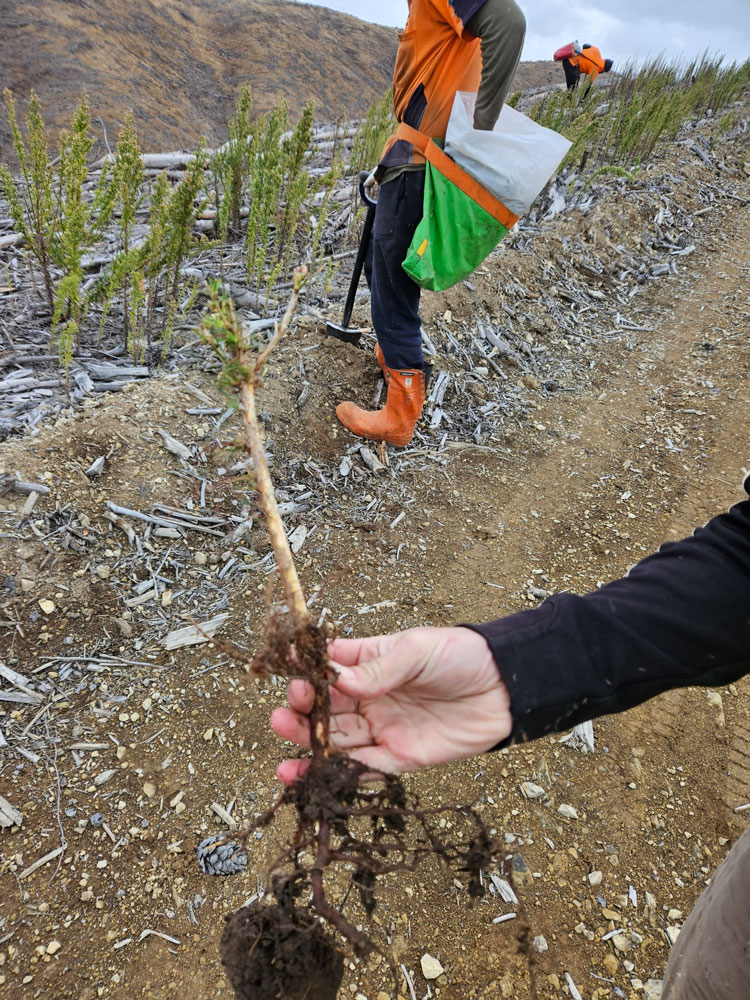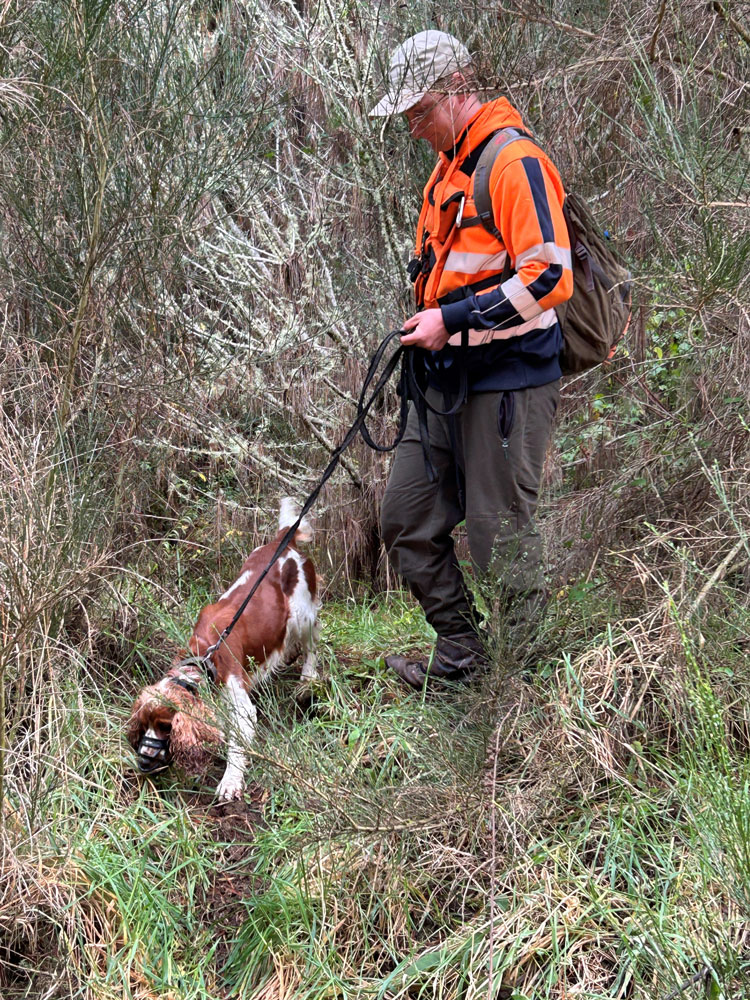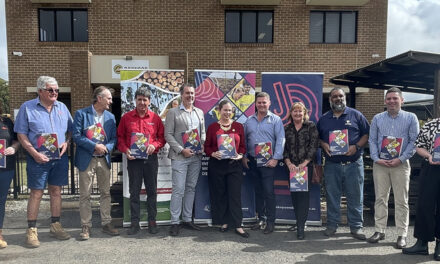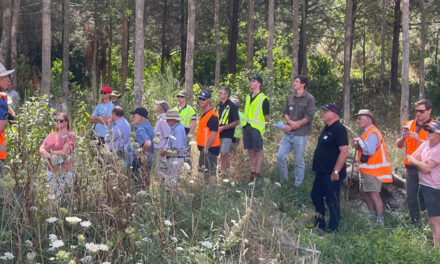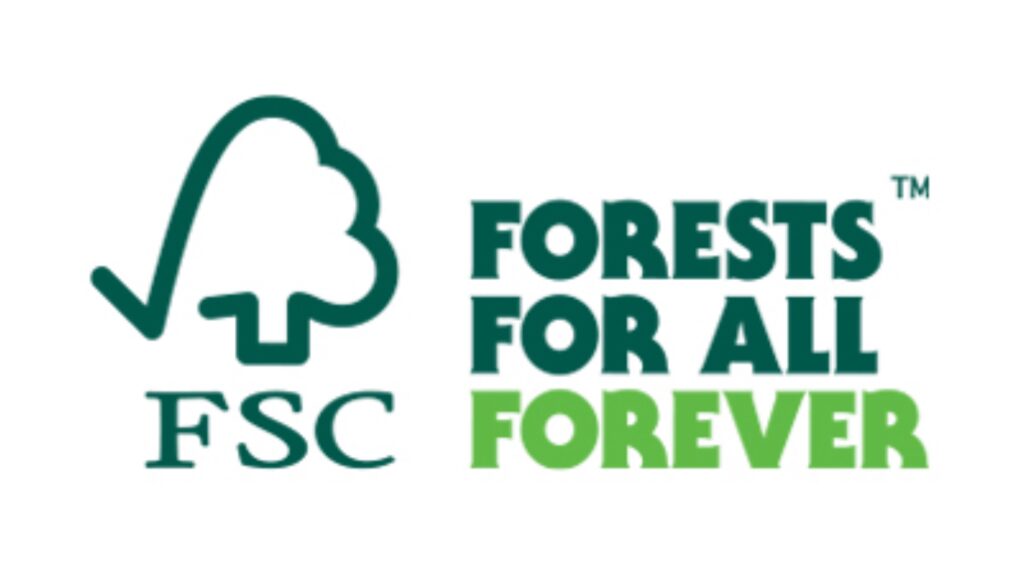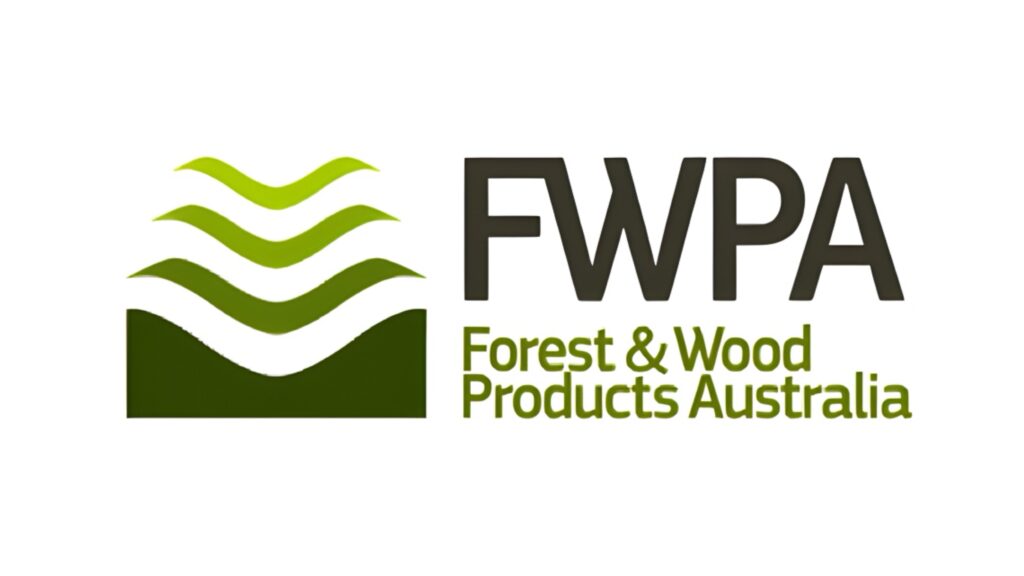NEW ZEALAND’S PEST WALLABIES
EFFECTS OF THEIR WIDESPREAD BROWSING.
Removing and replanting following wallaby browsing. Photo: Port Blakely
Wallaby detector dog helping locate wallabies in Timberlands’ Rotorua forests. Photo: Timberlands Rotorua
Following on from last week’s article (T&FN Enews issue 842) on the pest wallaby problem in New Zealand, we look further at efforts to contain and, ultimately, eradicate this elusive marsupial.
Jacqueline Neave, Team Manager, Pest Management Animals, Biosecurity New Zealand (at the Ministry for Primary Industries), says stopping their spread is key. “To protect our farms, forests and whenua, eradication and a wallaby-free Aotearoa is the long-term aspirational goal.
“The first strategic steps are to stop wallabies from spreading by eliminating populations that are outside the designated containment areas [the Bay of Plenty and Canterbury], and reducing the numbers within these areas to ease outward migration pressure.
“Operationally, this means working in from the outside edge of the wallaby populations and reducing the area they cover so that full elimination becomes possible in the future.”
Neave says that, anecdotally, farmers in wallaby-affected areas can lose upwards of 10-15% of pasture and crops annually to wallaby grazing, with livestock reluctant to enter areas cleared out and pastures fouled by wallabies.
“Riparian plantings and production forest areas are equally vulnerable to wallabies, which start attacking shrubs and plantings when there is no grass, nipping the buds out of Pinus radiata and other plantings.”
She notes that wallabies (and other introduced browsing animals like deer and goats) can potentially reduce the uptake of atmospheric carbon as vegetation grows – causing forests to release rather than hold carbon. “By eating seedlings and killing young trees, introduced browsers consume our future carbon sinks.”
ON THE FRONT LINE
In an article for the New Zealand Journal of Forestry (August 2024, Vol. 69, No. 2) the Tipu Mātoro National Wallaby Eradication Programme looked at two forestry companies that operate in the containment areas – Port Blakely in the south, and Timberlands Rotorua in the north.
“Pest wallabies strip seedlings of new growth, stunting survivors, or causing blanking and a need to replant [to maintain target stocking rates].
“This, in turn, affects the age class of trees across crop rotations, in some cases by up to five years. Scratching around young trees causes unwanted erosion – a particular problem in steep areas – and wallabies are known to contribute to poor water quality.”
At Port Blakely, Ashley Buchan (Operations Manager – Silviculture at Timaru) says it’s critical to control wallabies in the first two years of tree growth – and particularly just before the winter planting when there is less food available for them.
In the North Island, Steve Gatenby (Timberlands Rotorua’s Environmental Specialist) says “the one metre of good growth Timberlands expects in the first year from its new plantings can reduce by half when seedlings are browsed by the local area’s dama and parma species. They remove the tips as if they have been cut out and the trees end up as small bushes.
“Often the damage is not apparent until the trees are 10 to 12 months of age when mortality surveys highlight the failed areas that will need replanting.”
ERADICATION
Neave says the Tipu Mātoro National Wallaby Eradication Programme was set up in July 2020 to work towards the long-term goal of eradicating New Zealand’s dama, parma and Bennett’s pest wallaby problem.
“The programme’s funding for wallaby control (including on Department of Conservation land) goes to regional councils via Biosecurity New Zealand to maximise efficiencies by taking a landscape-scale, tenure-neutral approach. That means targeting wallabies in a systematic way, regardless of who owns the land.”
She adds that operational activities include surveillance, control operations (aerial and ground-based shooting, and poisoning using Feratox and 1080), and fencing to prevent spread. “Depending on the toxin used and delivery method, the programme’s poison operations are achieving between 70 and 99% success rates.”
TASMANIAN APPROACH
Given New Zealand’s eradication strategy, it’s interesting to note the approach in Tasmania where the Bennett’s wallaby and Tasmanian pademelon (rufous wallaby) are scheduled as partly protected wildlife. As such they can be taken under a hunting licence or Property Protection Permit (PPP) issued under the Nature Conservation (Wildlife) Regulations 2021.
A spokesperson for the Department of Natural Resources and Environment Tasmania says officers of Game Services Tasmania provide advice and information to land managers on methods of managing wallaby damage – including the use of fencing and shooting.
Wallaby-proof fencing is widely used and has proven to be a cost-effective means of reducing wallaby damage to crops and pastures in some situations. Nevertheless, shooting remains the primary method of wallaby control in the state.
Five-year PPPs are available to property owners or managers to undertake and authorise the shooting of Bennett’s and rufous wallabies. Permits are issued where abundance can be demonstrated as having a financial impact on stock, crops and equipment, or infrastructure used in the production of crops and stock.
MAIN PIC: Dama wallaby: centred on the Rotorua lakes area. Photo: Dale Williams, Bay of Plenty Regional Council

